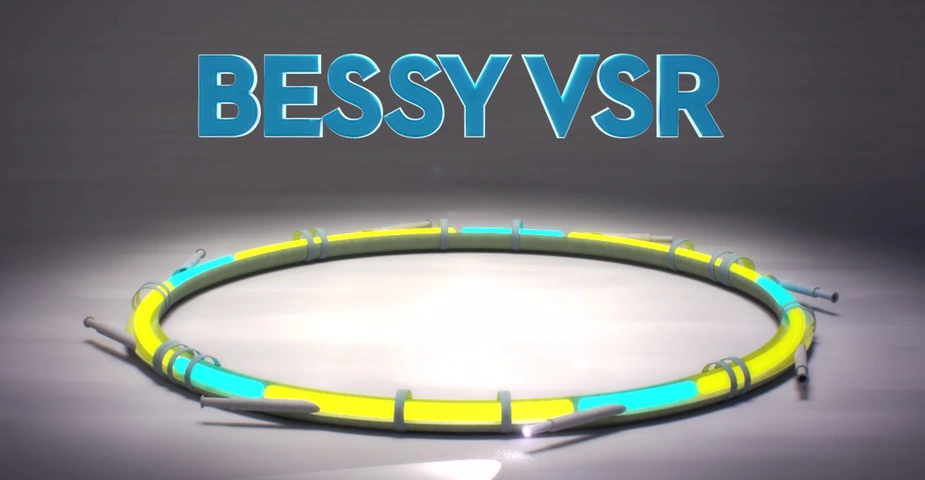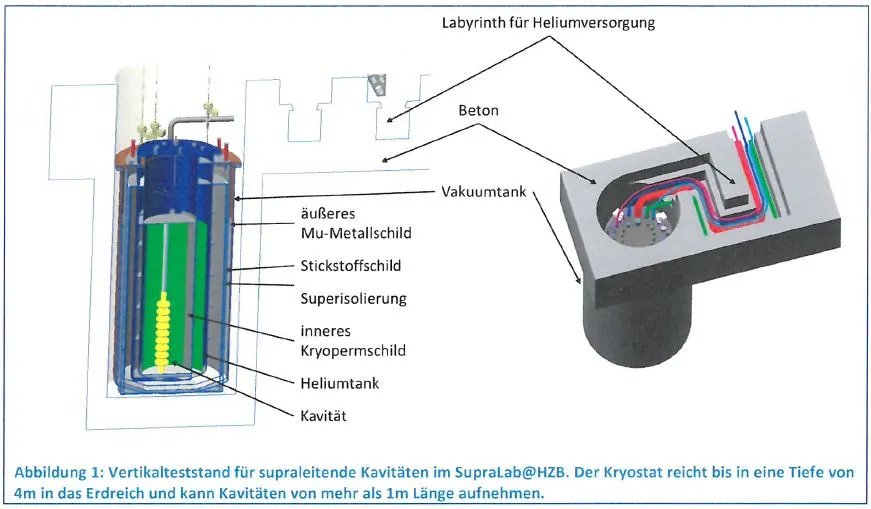7.4 million euros from the EFRE fund
HZB is setting up a new application laboratory for developing superconducting accelerator components
Helmholtz-Zentrum Berlin is receiving 7.4 million euros from the European Regional Development Fund (EFRE). The money is being used to set up the application laboratory “SupraLab@HZB” for the advancement of high-current superconducting cavities. These components will be needed for operating the next generation of novel, high-performance light sources. The laboratory will also provide complex superconducting component test beds for use by companies and research institutes in the region.
“We are very grateful for the funding from EFRE, and thank in particular the State of Berlin for supporting our application. With SupraLab@HZB, we will achieve a milestone in the development of pioneering accelerator technology. The creation of this application laboratory will generate know-how for future accelerators and novel lightsources. The development of this key technology also presents attractive economic opportunities for the research and industrial landscape of Berlin,” says Prof. Dr. Anke Kaysser-Pyzalla, scientific director of HZB.
To set up the new application laboratory, HZB is applying its internationally renowned expertise in the development of continuous wave (CW) superconducting accelerator components. “The advantage of these CW superconducting cavities is that they permanently apply a very high accelerator field and at the same time provide the freedom to optimise the geometry for high-current mode. So not only do they accelerate a high electron current; they also offer a practically freely selectable time structure (pulse sequence) of the current. Thanks to the EFRE funding, we now have the opportunity to develop this technology a great deal further until it is ready for application in light sources,” says Prof. Dr. Jens Knobloch, head of the HZB institute “SRF – Science and Technology” (ISRF), which has assumed the scientific direction of the SupraLab.
The HZB researchers aim to use this technology as part of the upgrade of BESSY II into a variable pulse length storage ring, BESSY VSR. For the first time, high-current superconducting cavities will be used to produce long and short pulses (in the picosecond range) of high-brilliancy light simultaneously in the one storage ring. Flexibly selectable pulse lengths will go a long way to resolving many unanswered questions in research. They will allow materials for energy conversion, for example, or future energy-efficient data storage (spintronics) to be studied more thoroughly and developed further than ever before.
For the SupraLab@HZB, the researchers want to develop and qualify not only cavities but also entire installable modules. Developing these superconducting modules, however, will require enormous technical effort. Accordingly, a complex infrastructure will be set up at the SupraLab@HZB for testing the cavities and systems. Plans include investments in cryogenic systems and high-frequency emitters, among other things. Once complete, the application laboratory will promote lasting technology transfer and cooperation with regional and national companies.
The project is being funded from the European Regional Development Fund as of 1 January 2017, and will run until the end of 2019. Helmholtz-Zentrum Berlin is contributing an equal sum from its own means. Thus, a total of 14.8 million euros is available for setting up the new application laboratory SupraLab@HZB.
Clips about BESSY VSR:
Contact:
Prof. Dr. Jens Knobloch
Institute SRF - Science and Technology
Tel.: (030) 8062-14883
Email: jens.knobloch(at)helmholtz-berlin.de
Press contact:
Dr. Ina Helms
Tel.: (030) 8062-42034 / -14626
Email: ina.helms(at)helmholtz-berlin.de


